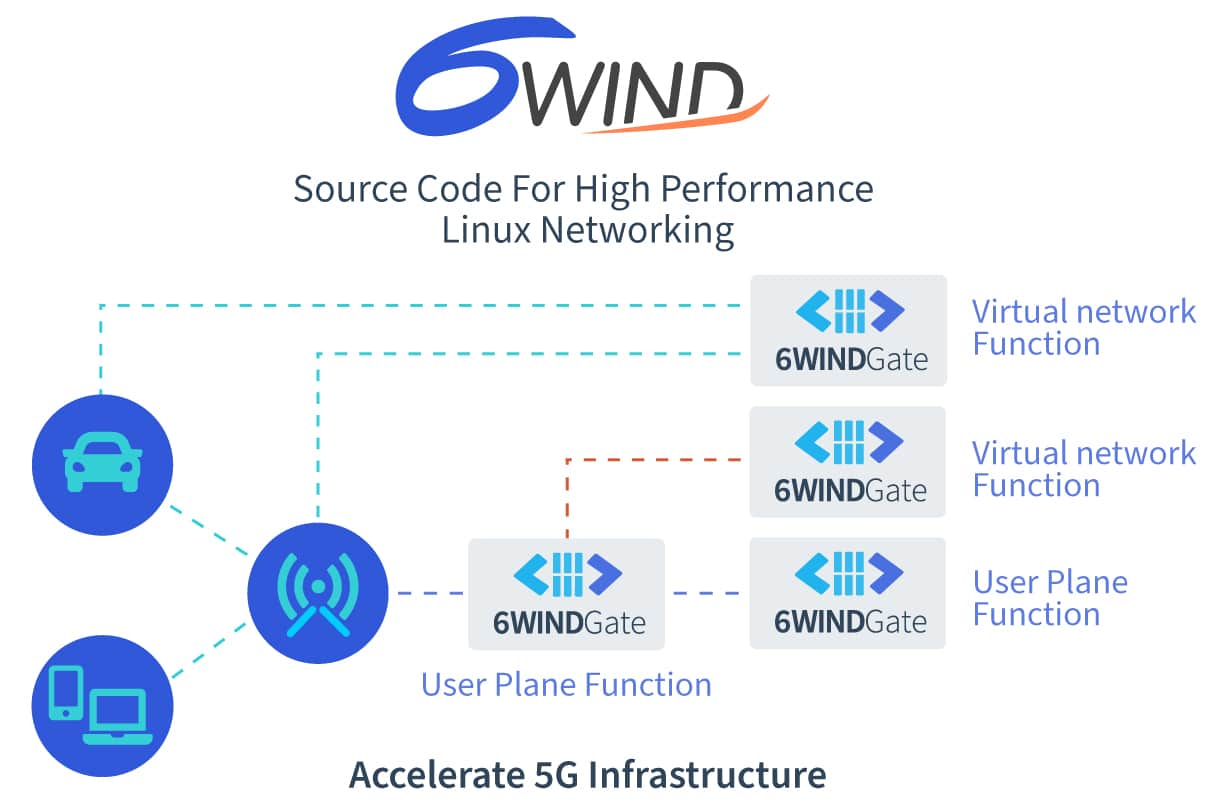5G Networking Expert
6WIND leads technical innovation by helping customers migrate from expensive proprietary hardware to software networking appliances. For the past decade, worldwide customers rely on 6WIND’s routing, security and TCP networking stacks to design the highest performing networking equipment in the industry.
DPDK.org
In 2013, 6WIND launched the DPDK.org (Data Plane Development Kit) open source project before successfully transferring it to the Linux Foundation in 2017. Initially designed for Intel architectures, DPDK is now the de facto framework to provide standardized services for high performance packet processing and a networking foundation for 5G.
6WIND’s flagship 6WINDGate foundation is high performance packet processing software designed natively on DPDK. 6WINDGate has been successfully deployed in 3G and 4G mobile infrastructure by major telecom equipment providers for EPC and vEPC including NEC and Mavenir and many more. Today, 6WIND helps its customers smoothly transition to 5G architectures.
6WINDGate provides a comprehensive software networking stack for 5G
Acceleration of all data plane features required for 5G UPF and VNFs including switching, routing, encapsulation, firewall, security, QoS, TCP and more for a wide range of environments (bare metal, virtual machines, containers, public clouds).
Industry’s highest performance IPsec and TLS/DTLS stacks to meet 5G security requirements.
Linux-friendly architecture helps 5G developers focus on application-level software to quickly differentiate their products and shorten time-to-market.
Complete NETCONF / YANG management architecture to extend and customize monitoring and analytics.
Support for Intel and Arm platforms.

5G Requirements
To sustain the tremendous increase in bandwidth data traffic required by video, connect billions of devices for Internet of Things (IoT) and create rich low-latency services like autonomous cars, 5G relies on architecture evolutions with regards to performance, scalability and flexibility. This is particularly true in critical areas such as the mobile core where traffic is aggregated but it’s also required at the access and the edge where cost constraints demand processing more traffic with the smallest amount of computing resources.
Beyond performance, complete visibility on the network stack and real-time diagnosis are also of key importance for complex and decentralized multi-vendor 5G environments.
The best solution to increase flexibility while reducing network CAPEX is to deliver the data plane and control plane networking functions using software running on standard servers instead of dedicated equipment designed on proprietary hardware. This is now possible with optimized networking stacks like 6WINDGate that scale very efficiently on multicore platforms. For instance, 6WINDGate can forward 12 million packets per second per core with minimal latency, or encrypt 12 Gbps with a single processor core. 6WINDGate is used to design high performance UPF and Virtual Network Functions.
To increase flexibility in the core network, 3GPP 5G has defined the User Plane Function (UPF) to decouple the data plane and control plane of the Packet Gateway (PGW). It enables the data forwarding component to be decentralized closer to the network edge and to operate at a higher speed. UPF provides the packet processing foundation for Service Based Architectures (SBAs) also defined by 3GPP to deliver the control plane functions through interconnected Virtual Network Functions (VNFs).